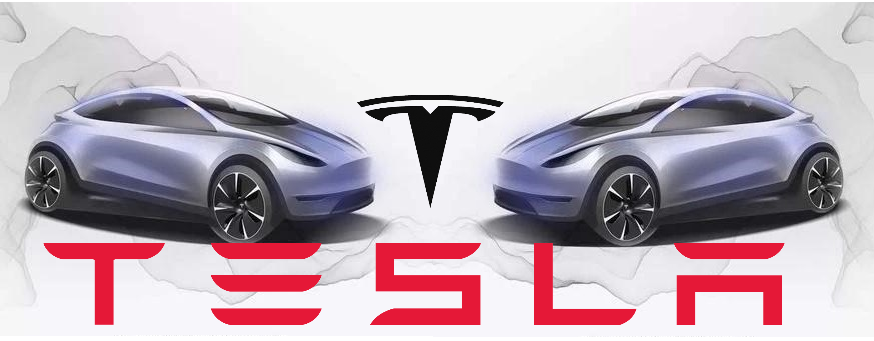Tesla Battery Day was chock-full of new information that a large swath of people may not have fully appreciated. A number of experts, journalists, and enthusiasts are now shedding light on very important Battery Day points that have not received their due attention. One of the most important such areas of focus is on the silicon anode.
Electrified/YouTube, tried to explain to us what exactly this means. He first explains the terminology itself, since people without special knowledge may confuse the names Silicon vs Silicone vs Silica.
Silicon is a chemical element with the symbol Si and atomic number 14. It is a hard, brittle crystalline solid with a blue-gray metallic luster, and is a tetravalent metalloid and semiconductor.
A silicone or polysiloxane are polymers made up of siloxane. They are typically colorless, oils or rubber-like substances.
Silica or silicon dioxide is a chemical compound.
During the presentation, Tesla speaks specifically and solely about silicon.
During Battery Day, Drew Baglino said:
"We have silicon in the cars that you're all in right now, involved highly engineered, expensive materials in the scheme of things. Now they're still great and they enable some of the benefits of silicon. They just don't enable all of it and they're not scalable enough."
In 2015, Elon Musk said:
"It is, actually, as a result of improved cell chemistry. We're shifting the cell chemistry for the upgraded pack to partially use silicon in the anode. This is just sort of a baby step in the direction of using silicon in the anode . We're still primarily using synthetic graphite, but over time we'll be using increasing amounts of silicon in the anode."
Since then, the utilization of silicon has become a very important milestone in lithium-ion batteries for vehicles and for the electronics industry in general. Silicon is widely considered the next big advance because the theoretical charge capacity can be about 10 times that of a typical graphite anode.
Musk, during Battery Day, explained well what a cathode and anode are:
"I was going to say it's tough to exactly figure out what the right analogy is to explain a cathode and anode. But a bookshelf is probably a pretty good one in the sense that you need a stable structure to contain the ions. So you want a structure that does not crumble or get gooey, or basically that that holds its shape in both the cathode and the anode. As you're moving these ions back and forth, it needs to retain its structure. So if it doesn't retain a structure, then you lose cycle life and your battery capacity drops very quickly."

Source: Tesla
Silicon can absorb more lithium ions, because these two materials form an alloy, the theoretical capacity of which is much higher than that of graphite, but the problem of which today is volume expansion.
Silicon is the most abundant element in the earth's crust after oxygen, which means that it is everywhere. This is sand. And it is inexpensive. Solutions for getting silicon into the anode today have the following cost:

Source: Electrified/YouTube
If Tesla implements silicon, then they introduce a step change in capability and cost up to about $1.20/kWh, which is about 6 to 10 times cheaper than existing methods that have been used to date.
The issue with silicon in these and other methods is that the particles crack, they lose energy retention, stick together with a passivation layer or an interfacial solid electrolyte. Or, as Musk explains:
"Basically with silicon, the cookie crumbles and gets gooey. That’s basically what happens."
Based on this, it becomes clear that the anode needs more mechanical stability, which will prevent crumbling and promote ionic conductivity. The main challenge is to prevent further decomposition of the electrolyte.
Something called Atomic Layer Deposition has indeed proven to stabilize and prevent SiO layer formation. Atomic layer deposition (ALD) is a thin-film deposition technique based on the sequential use of a gas phase chemical process; it is a subclass of chemical vapor deposition. ALD is a key process in the fabrication of semiconductor devices, and part of the set of tools available for the synthesis of nanomaterials.
Reducing the SiO layer allows us to maintain specific power and achieve a higher life cycle. So Tesla starts with a base metal or raw metallurgical silicon. Drew Baglino explained:
"What we're proposing is a step change in capability and a step change in cost. And what that really is to just go to the raw metallurgical silicon itself, don't engineer the base metal, just start with that and design for it to expand in how you think of the particle in the electrode design and how you coat it."

Source: Tesla
Part of Tesla's "secret sauce" with this new anode is how they coat the particles. Note that this one change alone should increase the vehicle range by 20% and reduce the $/kWh cost of production by 5%.
Here is a hypothetical display of increasing range by 20%:

Source: Electrified/YouTube
© 2020, Eva Fox. All rights reserved.
_____________________________
We appreciate your readership! Please share your thoughts in the comment section below.
Article edited by @SmokeyShorts, you can follow him on Twitter








